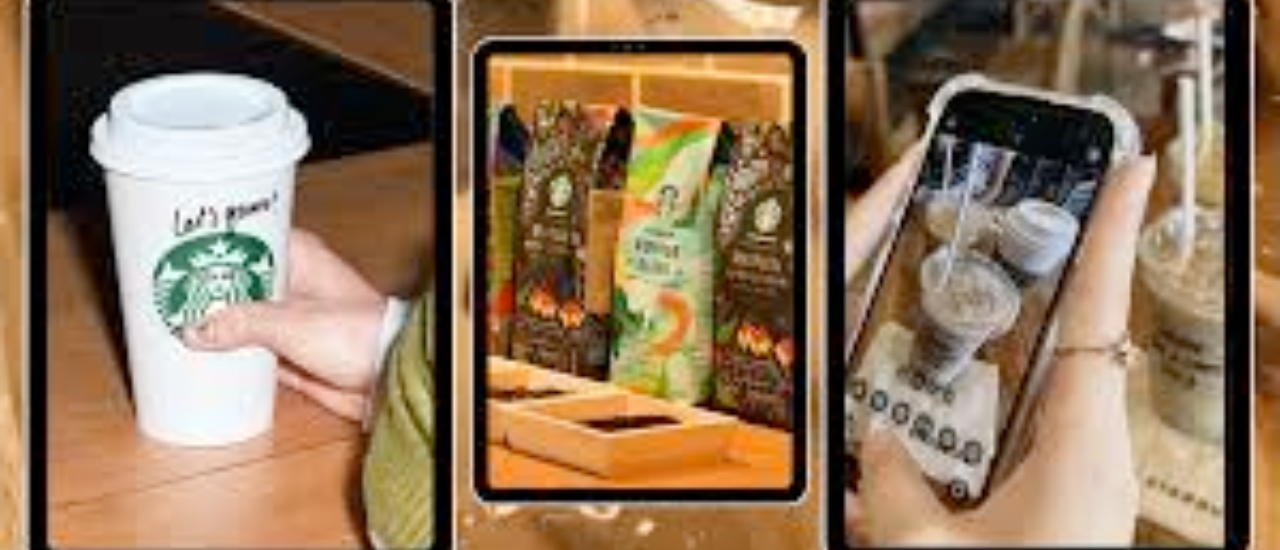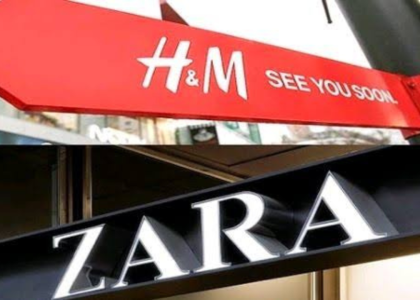Executive Summary
Starbucks has, since its inception, positioned itself not merely as a coffee retailer but as a cultural icon. Across decades, the brand has elevated the act of coffee drinking into an experience—anchored in ambience, service, and emotional association. For Starbucks, premium is not simply about price; it is a carefully orchestrated perception strategy encompassing design, exclusivity, lifestyle alignment, and customer touchpoints.
Among Generation Z (born between 1997 and 2012), Starbucks faces both its greatest opportunity and most critical challenge. This demographic commands enormous influence on cultural trends, exhibits unique consumption patterns, and is shaping the future of global premium categories. Their expectations are higher, their scrutiny sharper, and their loyalty more conditional than earlier cohorts like Millennials.
Starbucks’ premium perception among Gen Z is shaped by several factors:
-
Brand Identity: Starbucks is perceived as aspirational due to its global footprint, distinctive store formats, and consistent quality.
-
Cultural Symbolism: For Gen Z, carrying a Starbucks cup often symbolizes belonging to a global cosmopolitan community.
-
Experience-First Philosophy: Beyond beverages, Starbucks sells “the third place”—an inviting space between home and work that appeals strongly to Gen Z’s social and study habits.
-
Digital Ecosystem: The Starbucks Rewards program, mobile ordering, and integration with Instagram/TikTok culture elevate Starbucks as a premium digital-first experience.
-
Sustainability & Inclusion: Gen Z associates premium with ethics; Starbucks’ investments in eco-friendly initiatives and DEI programs strengthen its credibility.
Yet challenges loom. Local artisanal cafés in key markets (Blue Bottle in the US, Tim Hortons in Canada, Third Wave Coffee in India, % Arabica in Japan, etc.) chip away at Starbucks’ unique selling proposition by offering authenticity, small-batch craft, and affordability. Criticism over pricing, labor practices, and “corporate dilution of authenticity” has also dented Starbucks’ premium narrative among critical segments of Gen Z.
This report explores the multi-dimensional perception of Starbucks among Gen Z globally, drawing upon brand positioning, consumer psychology, cultural analysis, and comparative insights. It reveals Starbucks’ tightrope walk—between global standardization and local customization, between aspirational pricing and inclusivity, and between premium positioning and accessibility. The future of Starbucks’ premium playbook depends on its ability to balance these contradictions while keeping Gen Z’s evolving values at the center.
Introduction
Premium positioning in consumer markets is more than just setting higher prices. It is a strategic effort to cultivate exclusivity, desirability, and cultural capital. Starbucks has long been heralded as the architect of “premium coffee culture,” transforming a daily commodity into a lifestyle marker. Its success lies in redefining coffee from a utilitarian necessity into a global cultural ritual.
But as markets evolve, so does the definition of premium. Generation Z—tech-native, value-driven, socially conscious, and experimental—does not automatically equate premium with high cost. Instead, premium for them signifies authenticity, personalization, sustainability, digital fluency, and cultural fit. In this context, Starbucks’ historic premium cues are being reinterpreted and challenged.
Globally, the coffeehouse industry is valued at over $200 billion, with Starbucks holding the largest share (approx. 36,000 stores worldwide as of 2024). Yet market growth is uneven: saturation in the US contrasts with rapid expansion in China, India, and other emerging markets. For Starbucks, the battle for relevance with Gen Z is essential for sustaining its premium halo and driving growth across these diverse geographies.
This report examines Starbucks’ premium perception through the lens of Gen Z consumers. It dissects Starbucks’ strategies, successes, and shortcomings across markets, highlighting how Gen Z’s values intersect with Starbucks’ brand identity.
Starbucks Brand Identity & Premium Playbook
Starbucks’ premium positioning rests on several carefully cultivated pillars:
-
Store Design & Ambience: Starbucks pioneered the “third place” philosophy, positioning its stores as social and cultural hubs. Cozy interiors, Wi-Fi access, and music playlists make Starbucks attractive to Gen Z seeking spaces to study, socialize, or work remotely.
-
Menu Strategy: The brand’s offerings balance global consistency (latte, cappuccino, Frappuccino) with localized innovations (masala chai latte in India, red bean frappes in China). Limited edition and seasonal menus (Pumpkin Spice Latte, Cherry Blossom Frappuccino) drive premium scarcity appeal.
-
Pricing: Starbucks maintains a premium pricing model, often charging 20–40% more than local competitors. Price itself becomes a premium signal, equating ownership with status.
-
Brand Cues: The green siren logo, customized name-on-cup ritual, and social media-friendly beverages enhance Starbucks’ identity as a lifestyle brand.
-
Exclusivity Through Scale: Ironically, Starbucks leverages ubiquity as exclusivity. Being present globally enables Gen Z to signal cosmopolitan identity, especially in emerging economies where Starbucks is still novel.
Gen Z: Consumer Profile & Coffee Culture
Who is Gen Z?
-
Age Bracket: Born 1997–2012; currently aged 13–28.
-
Digital DNA: 90%+ of Gen Z owns smartphones; platforms like TikTok, Instagram, and YouTube shape consumption.
-
Values: Diversity, sustainability, social justice, authenticity.
-
Consumption Style: Preference for experiences over possessions; willingness to pay more for brands aligned with their values.
Coffee & Gen Z
-
Gen Z consumes coffee differently from Millennials. While Millennials popularized café culture, Gen Z has normalized it as an everyday experience.
-
According to National Coffee Association (US, 2023), 51% of Gen Z reported drinking coffee daily, with cold brew, flavored lattes, and plant-based alternatives driving growth.
-
In India, Tier-1 Gen Z consumers see Starbucks as aspirational and use it as a social backdrop for friendships and dating.
-
In China, Gen Z consumers view Starbucks both as a premium lifestyle signal and as a symbol of Western modernity, though domestic competitors like Luckin Coffee are redefining affordability without losing aspirational value.
Starbucks’ Premium Perception Among Gen Z
For Gen Z, Starbucks’ premium perception is anchored in multiple layers:
-
Social Symbolism: The iconic cup is Instagrammable—a visual shorthand for belonging to global youth culture.
-
Customization: Starbucks’ personalization (“half-caf soy latte, no whip”) aligns with Gen Z’s desire for individuality.
-
Digital Integration: Starbucks Rewards, mobile ordering, and AR-enabled experiences reinforce Starbucks as a premium digital-first brand.
-
Sustainability & Ethics: Starbucks’ “Greener Stores” initiative, reusable cup campaigns, and Fairtrade sourcing connect with Gen Z’s eco-consciousness.
-
Premium as Experience, Not Product: For Gen Z, the $5 latte is justified less by the coffee itself and more by the ambience, free Wi-Fi, digital convenience, and social currency.
However, Gen Z also critiques Starbucks:
-
“Overpriced” is a common perception, especially in price-sensitive economies.
-
Local artisanal cafés often feel more authentic and aligned with Gen Z’s identity.
-
Corporate controversies (unionization battles in the US, environmental critiques) have dented Starbucks’ “ethical premium” positioning.
Starbucks’ Communication & Media Playbook
Starbucks has been adept at embedding itself into Gen Z’s digital worlds:
-
Influencer Collaborations: From TikTok-inspired drinks to celebrity tie-ins (e.g., Ariana Grande’s Cloud Macchiato), Starbucks uses influencers to maintain buzz.
-
Merchandising: Limited edition tumblers, seasonal collections, and co-branded products elevate Starbucks’ premium scarcity model.
-
Starbucks Rewards: With 34 million members in the US alone (2024), the app gamifies loyalty, offering rewards, digital payments, and exclusive offers.
-
TikTok & Instagram: Hashtags like #StarbucksDrinks and #StarbucksSecretMenu generate millions of UGC impressions, turning Starbucks into a co-created brand.
Challenges to Starbucks’ Premium Perception
-
Affordability Gap: In India, a ₹400 cappuccino feels aspirational but inaccessible for daily consumption.
-
Local Competition: Third-wave cafés emphasize artisanal brewing, transparency, and craft—qualities Gen Z values more than corporate consistency.
-
Over-Commercialization: Seasonal hype drinks like Pumpkin Spice Latte sometimes feel gimmicky to authenticity-driven Gen Z.
-
Ethical Scrutiny: Labor disputes, plastic usage, and accusations of “greenwashing” threaten Gen Z’s trust in Starbucks’ premium halo.
Comparative Case Studies
-
Apple: Mirrors Starbucks in creating aspirational ecosystems (design, retail spaces, digital ecosystem).
-
Nike: Aligns premium perception with empowerment campaigns (#JustDoIt) resonating with Gen Z’s activism.
-
Blue Bottle Coffee: Represents the artisanal challenger brand narrative—small-batch, authentic, minimalistic, and premium in a different way.
-
% Arabica: Highly Instagrammable Japanese coffee chain; appeals strongly to Gen Z’s aesthetic-driven consumption.
Future Outlook: Sustaining Premium Among Gen Z
Starbucks’ roadmap to sustain premium perception lies in:
-
Hyperlocalization: More local menu innovation, co-creation with Gen Z communities.
-
Sustainability First: Transparent reporting, carbon neutrality, and real eco-impact.
-
Digital Gamification: Expanding the Rewards ecosystem into AR, VR, and Web3-enabled brand engagement.
-
Inclusive Pricing: Tiered offerings (small size cups, student discounts) to balance accessibility with premium aura.
Scenario analysis shows that Starbucks’ premium halo will hold strongest in emerging markets (India, SEA, Middle East), while facing the steepest challenge in saturated Western markets.
Conclusion & Strategic Recommendations
Starbucks’ premium perception among Gen Z is complex: it thrives on digital-first engagement, social symbolism, and lifestyle alignment, but it risks erosion from affordability concerns, authenticity-driven competitors, and ethical scrutiny.
Strategic Recommendations:
-
Reinforce authenticity through storytelling (farm-to-cup transparency, barista narratives).
-
Enhance inclusivity with pricing experiments without diluting brand equity.
-
Prioritize genuine sustainability and report measurable progress.
-
Expand digital engagement through personalized gamification.
-
Maintain cultural coolness with limited collabs, but avoid gimmicky over-commercialization.
In short, Starbucks’ future premium identity will depend less on coffee and more on culture, digital ecosystems, and values alignment.
References / Sources
-
National Coffee Association, 2023 Coffee Trends Report.
-
Statista: Global Coffeehouse Market Size & Share (2024).
-
Starbucks Annual Report, 2023–24.
-
Deloitte Consumer Pulse Survey, 2023.
-
McKinsey: Gen Z and the Future of Consumer Behavior, 2022.
-
Euromonitor: Global Café Culture Insights, 2023.
-
Starbucks Investor Presentation, 2024.
-
GlobalWebIndex (GWI): Gen Z Consumption Trends, 2023.
-
Social Blade & TikTok Analytics: Starbucks Hashtag Reach, 2024.






